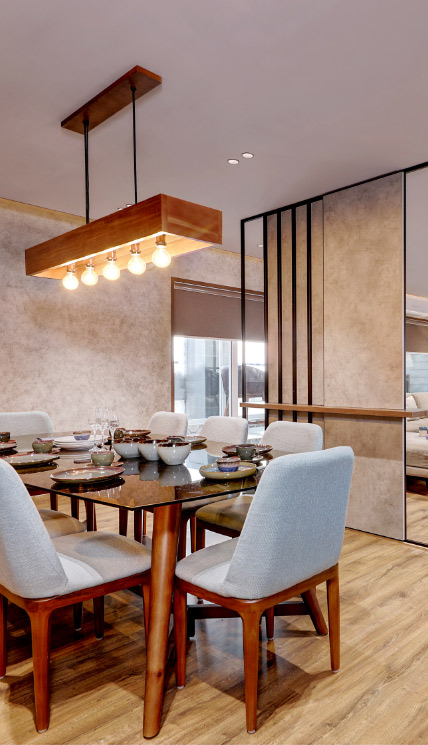Change Your Home With Important Concepts of Interior Decoration and Aesthetic Appeals
By understanding the effect of shade concept and the relevance of appearance and patterns, one can produce spaces that are not only aesthetically appealing yet likewise deeply personal. Accomplishing this equilibrium entails more than plain decoration; it includes a tactical arrangement and an eager understanding of just how each component interacts within a room.
Recognizing Color Theory
Understanding the principles of shade concept permits designers to develop rooms that resonate mentally with residents while fulfilling practical demands. Each classification plays a crucial function in establishing consistency within a room.
The psychological influence of shades is profound; cozy tones such as reds and oranges evoke power and warmth, while awesome tones like blues and greens promote calmness and serenity. In addition, using complementary shades enhances aesthetic rate of interest, creating striking contrasts that can elevate an area's charm.
Neutral colors, on the various other hand, offer as a versatile backdrop, enabling various other style aspects to shine. It is important to take into consideration factors such as illumination and the room's purpose when choosing a shade palette, as these can alter the assumption of colors throughout the day.
Eventually, a well-considered color design can transform a space, promoting a sense of comfort and design that lines up with the residents' choices. Proficiency of shade concept is, consequently, an important ability for any indoor developer aiming to create harmonious and inviting settings.
Achieving Balance in Style
How can developers achieve a sense of stability in their rooms? Accomplishing balance in layout is basic to creating unified interiors. Designers can use three key types of balance: symmetrical, unbalanced, and radial. Balanced equilibrium involves arranging aspects equally around a main factor, promoting a sense of order and serenity. This type typically includes pairs of furniture or art work, boosting visual security.
Unbalanced equilibrium, on the various other hand, depends on varying components that still accomplish a cohesive look. This method allows for even more dynamic and casual setups, providing passion while maintaining balance. By carefully picking varying sizes, shades, and textures, developers can produce a visually compelling room that really feels balanced yet energised.
Radial equilibrium highlights a central centerpiece with components emitting external. This style is commonly seen in circular designs, where furniture and decor produce a natural surround that attracts the eye inward.
Inevitably, accomplishing balance calls for thoughtful consideration of range, percentage, and the relationships between components. Architecture Firm. By skillfully using these equilibrium concepts, designers can transform spaces into atmospheres that feel both cosmetically pleasing and functionally unified, improving the general experience for residents
Significance of Spatial Recognition

An eager sense of spatial recognition allows designers to identify centerpieces within a space, directing the audience's focus to vital attributes while maintaining a general feeling of unity. It also assists in the tactical positioning of lights, which can drastically influence the perception of area and state of mind. Additionally, recognizing spatial connections enables the developer to cater to the specific needs of citizens, making certain that each location offers its designated function without endangering aesthetic appeals.
Ultimately, spatial recognition is vital for making the most of the potential of any interior area. By carefully taking into consideration the interplay between dimensions, layout, and feature, designers can produce environments that not only fulfill practical needs however likewise evoke a sense of comfort and elegance, enhancing the overall living experience.
Integrating Structure and Patterns
Embracing a diverse array of structures and patterns can significantly improve the visual and tactile appeal of an indoor room. The strategic usage of various products-- such as timber, steel, textile, and rock-- develops depth and passion, making a room feel much more inviting and dynamic. Integrating smooth surface areas with rough appearances can establish an equilibrium that draws the eye and involves the senses.
When integrating patterns, think about both range and repetition. Big patterns can function as focal points, while smaller sized, refined layouts can enhance various other aspects without frustrating the room. Layering patterns, such as pairing floral pillows Going Here with candy striped throws, includes intricacy and a sense of consistency if implemented attentively.
It is also vital to maintain a natural color scheme, making certain that appearances and patterns collaborate instead of compete for interest. By choosing a few vital structures and patterns, you can develop an unified aesthetic that reflects your individual design while boosting the total ambiance of the area. Inevitably, the careful consolidation of these elements can transform an ordinary area right into an innovative environment abundant with personality and warmth.
Personalizing Your Room
Producing an area that mirrors your character is important to achieving an absolutely welcoming environment. Customization in interior decoration allows you to infuse your distinct style and passions right into your home, transforming it from a plain shelter right into a haven that talks to that you are. Begin by selecting a color scheme that reverberates with your emotions-- strong colors can energize, while soft tones offer serenity.
Integrate artwork and style that reflect your enthusiasms, whether it be travel, nature, or abstract ideas. Displaying individual collections, such as books, photos, or souvenirs, can stimulate cherished memories and develop focal points within a space. In addition, think about personalizing practical items, like upholstered furnishings, to line up with your visual choices.

Verdict
To conclude, the makeover of a home with the essential concepts of interior style and appearance requires a detailed understanding of shade concept, balance, spatial understanding, texture, and customization. Each element adds significantly to creating a harmonious and functional living setting - interior design firms. By attentively incorporating these principles, people can enhance the aesthetic appeal and emotional vibration of their rooms, ultimately promoting a home that reflects special identities while providing convenience and practicality